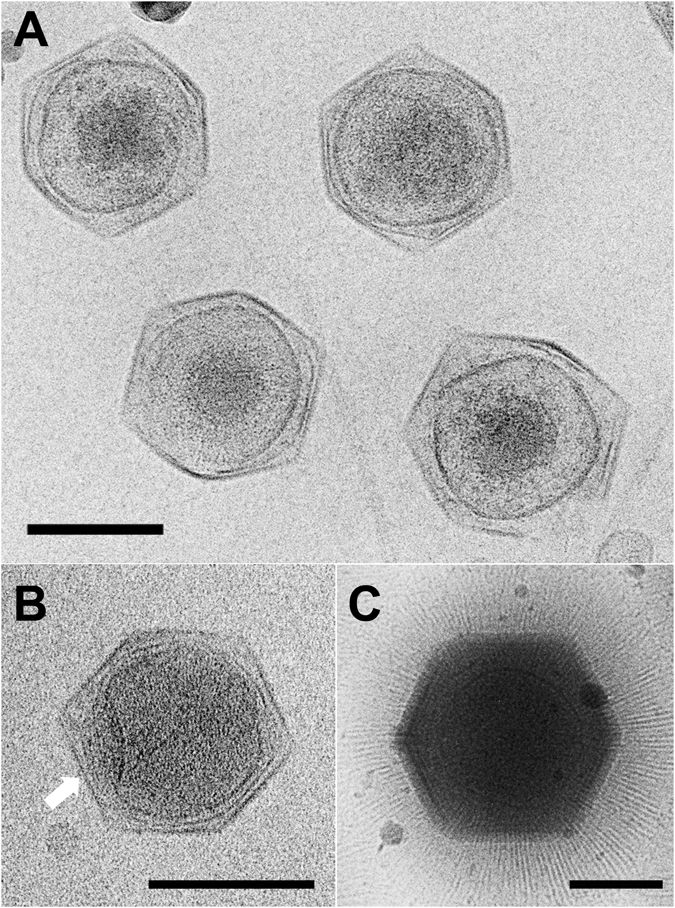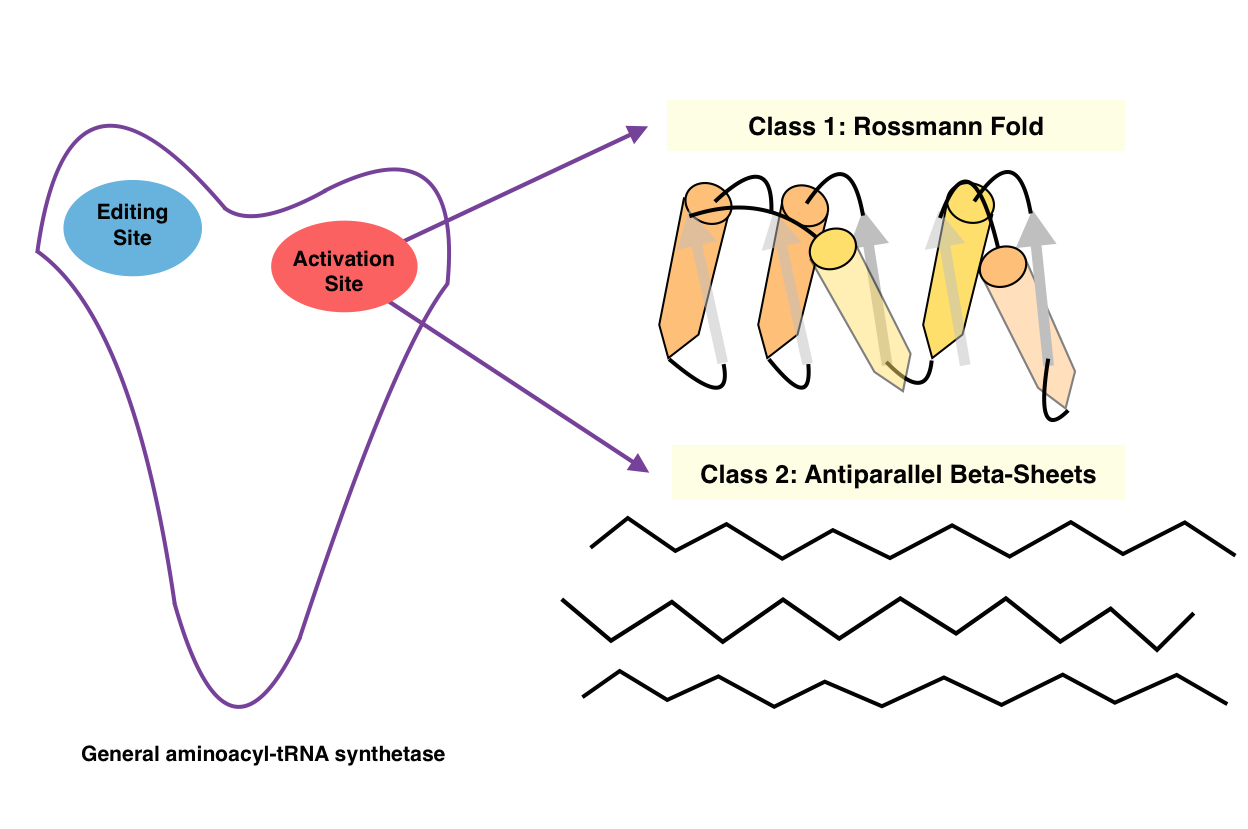|
Megavirus Chilense
''Megavirus'' is a viral genus, phylogenetically related to '' Acanthamoeba polyphaga mimivirus'' (APMV). In colloquial speech, ''Megavirus chilense'' is more commonly referred to as just "Megavirus". Until the discovery of pandoraviruses in 2013, it had the largest capsid diameter of all known viruses, as well as the largest and most complex genome among all known viruses. Discovery ''Megavirus'' was isolated from a water sample collected in April 2010 off the coast of Chile, near the marine station in Las Cruces, by Jean-Michel Claverie and Chantal Abergel from the Structural & Genomic Information laboratory (IGS, CNRS and Aix-Marseille University). Megavirus was isolated by co-cultivation with a variety of ''Acanthamoeba'' laboratory strains ('' Acanthamoeba polyphaga'', '' Acanthamoeba castellanii'', '' Acanthamoeba griffini'') following a protocol pioneered by Timothy Rowbotham for isolating intracellular parasitic bacteria. Megavirus infects amoebas. Structure The Me ... [...More Info...] [...Related Items...] OR: [Wikipedia] [Google] [Baidu] |
Nanometre
330px, Different lengths as in respect to the Molecule">molecular scale. The nanometre (international spelling as used by the International Bureau of Weights and Measures; SI symbol: nm), or nanometer (American spelling), is a unit of length in the International System of Units (SI), equal to one billionth ( short scale) or one thousand million (long scale) of a meter (0.000000001 m) and to 1000 picometres. One nanometre can be expressed in scientific notation as 1 × 10−9 m and as m. History The nanometre was formerly known as the "''millimicrometre''" – or, more commonly, the "''millimicron''" for short – since it is of a micrometer. It was often denoted by the symbol ''mμ'' or, more rarely, as ''μμ'' (however, ''μμ'' should refer to a ''millionth'' of a micron). Etymology The name combines the SI prefix '' nano-'' (from the Ancient Greek , ', "dwarf") with the parent unit name ''metre'' (from Greek , ', "unit of measurement"). ... [...More Info...] [...Related Items...] OR: [Wikipedia] [Google] [Baidu] |
Virophage
Virophages are small, double-stranded DNA viral phages that require the co-infection of another virus. The co-infecting viruses are typically giant viruses. Virophages rely on the viral replication factory of the co-infecting giant virus for their own replication. One of the characteristics of virophages is that they have a parasitic relationship with the co-infecting virus. Their dependence upon the giant virus for replication often results in the deactivation of the giant viruses. The virophage may improve the recovery and survival of the host organism. Virophages constitute the class ''Virophaviricetes''. Discovery The first virophage was discovered in a cooling tower in Paris in 2008. It was discovered with its co-infecting giant virus, ''Acanthamoeba castellanii'' mamavirus (ACMV). The virophage was named Sputnik and its replication relied entirely on the co-infection of ACMV and its cytoplasmic replication machinery. Sputnik was also discovered to have an inhibitory e ... [...More Info...] [...Related Items...] OR: [Wikipedia] [Google] [Baidu] |
Pandoraviridae
''Pandoraviridae'' is a proposed family of double-stranded DNA viruses that infect amoebae. There is only one genus in this family: ''Pandoravirus''. Several species in this genus have been described, including '' Pandoravirus dulcis'', '' Pandoravirus salinus'' and '' Pandoravirus yedoma''. History The viruses were discovered in 2013. Description The viruses in this family are the second largest known virus (~1 micrometer) in capsid length, after ''Pithovirus'' (1.5 micrometer). ''Pandoravirus'' has the largest viral genome known, containing double-stranded DNA Deoxyribonucleic acid (; DNA) is a polymer composed of two polynucleotide chains that coil around each other to form a double helix. The polymer carries genetic instructions for the development, functioning, growth and reproduction of al ... of 1.9 to 2.5 megabase pairs. Evolution These viruses appear to be related to the phycodnaviruses. References {{Taxonbar, from=Q16987267 Nucleocytoplasmic larg ... [...More Info...] [...Related Items...] OR: [Wikipedia] [Google] [Baidu] |
Micrometre
The micrometre (English in the Commonwealth of Nations, Commonwealth English as used by the International Bureau of Weights and Measures; SI symbol: μm) or micrometer (American English), also commonly known by the non-SI term micron, is a unit of length in the International System of Units (SI) equalling (SI standard prefix "micro-" = ); that is, one millionth of a metre (or one thousandth of a millimetre, , or about ). The nearest smaller common SI Unit, SI unit is the nanometre, equivalent to one thousandth of a micrometre, one millionth of a millimetre or one billionth of a metre (). The micrometre is a common unit of measurement for wavelengths of infrared radiation as well as sizes of biological cell (biology), cells and bacteria, and for grading wool by the diameter of the fibres. The width of a single human hair ranges from approximately 20 to . Examples Between 1 μm and 10 μm: * 1–10 μm – length of a typical bacterium * 3–8 μm – width of str ... [...More Info...] [...Related Items...] OR: [Wikipedia] [Google] [Baidu] |
Pithovirus
''Alphapithovirus'', is a genus of giant virus known from two species, '' Alphapithovirus sibericum'', which infects amoebas, and '' Alphapithovirus massiliense''. It is DNA-based and is a member of the nucleocytoplasmic large DNA viruses clade. It was discovered in 2014, when a viable specimen was found in a 30,000-year-old ice core harvested from permafrost in Siberia, Russia. Description The genus name ''Alphapithovirus'', a reference to large storage containers of ancient Greece known as pithoi, was chosen to describe the new species. A specimen of ''Alphapithovirus'' measures approximately 1.5 μm (1500 nm) in length and 0.5 μm (500 nm) in diameter, making it one of the largest viruses yet found, second to Megaklothovirus. It is 50% larger in size than the '' Pandoraviridae'', the previous largest-known viruses, and is larger than '' Ostreococcus'', the smallest eukaryotic cell, although ''Pandoravirus'' has the largest viral genome, containing 1.9 to ... [...More Info...] [...Related Items...] OR: [Wikipedia] [Google] [Baidu] |
Virus
A virus is a submicroscopic infectious agent that replicates only inside the living Cell (biology), cells of an organism. Viruses infect all life forms, from animals and plants to microorganisms, including bacteria and archaea. Viruses are found in almost every ecosystem on Earth and are the most numerous type of biological entity. Since Dmitri Ivanovsky's 1892 article describing a non-bacterial pathogen infecting tobacco plants and the discovery of the tobacco mosaic virus by Martinus Beijerinck in 1898, more than 16,000 of the millions of List of virus species, virus species have been described in detail. The study of viruses is known as virology, a subspeciality of microbiology. When infected, a host cell is often forced to rapidly produce thousands of copies of the original virus. When not inside an infected cell or in the process of infecting a cell, viruses exist in the form of independent viral particles, or ''virions'', consisting of (i) genetic material, i.e., long ... [...More Info...] [...Related Items...] OR: [Wikipedia] [Google] [Baidu] |
Parvovirus
Parvoviruses are a family of animal viruses that constitute the family ''Parvoviridae''. They have linear, single-stranded DNA (ssDNA) genomes that typically contain two genes encoding for a replication initiator protein, called NS1, and the protein the viral capsid is made of. The coding portion of the genome is flanked by telomeres at each end that form into hairpin loops that are important during replication. Parvovirus virions are small compared to most viruses, at 23–28 nanometers in diameter, and contain the genome enclosed in an icosahedral capsid that has a rugged surface. Parvoviruses enter a host cell by endocytosis, travelling to the nucleus where they wait until the cell enters its replication stage. At that point, the genome is uncoated and the coding portion is replicated. Viral messenger RNA (mRNA) is then transcribed and translated, resulting in NS1 initiating replication. During replication, the hairpins repeatedly unfold, are replicated, and refold to cha ... [...More Info...] [...Related Items...] OR: [Wikipedia] [Google] [Baidu] |
Cafeteria Roenbergensis Virus
''Cafeteria roenbergensis'' virus (CroV), scientific name ''Rheavirus sinusmexicani'', is a giant virus that infects the marine bicosoecid flagellate ''Cafeteria roenbergensis'', a member of the microzooplankton community. History The virus was isolated from seawater samples collected from the Gulf of Mexico during 1989 to 1991, on a flagellate host that was misidentified as belonging to the genus ''Bodo''; hence the original designation of the virus as BV-PW1. The virus was shown to be about 300 nm in diameter and have a complex internal structure, as well as evidence of a putative tail-like structure. Further work on the virus indicated that the host was an isolate of the genus ''Cafeteria'' and that the genome had a G+C content of ~34%. Further analysis suggested that the helicase of the virus was phylogenetically related to those found in the family ''Asfarviridae'', and that the virus shared properties with members of the nucleocytoplasmic large DNA viruses group. CroV ... [...More Info...] [...Related Items...] OR: [Wikipedia] [Google] [Baidu] |
Mimivirus
''Mimivirus'' is a genus of giant viruses, in the family ''Mimiviridae''. It is believed that Amoeba serve as their natural hosts. It also refers to a group of phylogenetically related large viruses. In colloquial speech, APMV is more commonly referred to as just "mimivirus". Mimivirus, short for "mimicking microbe", is so called to reflect its large size and apparent Gram-staining properties. Mimivirus has a large and complex genome compared with most other viruses. Until 2013, when a larger virus ''Pandoravirus'' was described, it had the largest capsid diameter of all known viruses. History APMV was discovered accidentally in 1992 within the amoeba ''Acanthamoeba, Acanthamoeba polyphaga'', after which it is named, during research into legionellosis by researchers from Marseille and Leeds. The virus was observed in a Gram stain and mistakenly thought to be a Gram-positive bacterium. As a consequence it was named ''Bradfordcoccus'', after Bradford, England, where the amoeba h ... [...More Info...] [...Related Items...] OR: [Wikipedia] [Google] [Baidu] |
Aminoacyl TRNA Synthetases
An aminoacyl-tRNA synthetase (aaRS or ARS), also called tRNA-ligase, is an enzyme that attaches the appropriate amino acid onto its corresponding tRNA. It does so by catalyzing the transesterification of a specific cognate amino acid or its precursor to one of all its compatible cognate tRNAs to form an aminoacyl-tRNA. In humans, the 20 different types of aa-tRNA are made by the 20 different aminoacyl-tRNA synthetases, one for each amino acid of the genetic code. This is sometimes called "charging" or "loading" the tRNA with an amino acid. Once the tRNA is charged, a ribosome can transfer the amino acid from the tRNA onto a growing peptide, according to the genetic code. Aminoacyl tRNA therefore plays an important role in RNA translation, the expression of genes to create proteins. Mechanism The synthetase first binds ATP and the corresponding amino acid (or its precursor) to form an aminoacyl-adenylate, releasing inorganic pyrophosphate (PPi). The adenylate-aaRS complex then ... [...More Info...] [...Related Items...] OR: [Wikipedia] [Google] [Baidu] |
Base Pairs
A base pair (bp) is a fundamental unit of double-stranded nucleic acids consisting of two nucleobases bound to each other by hydrogen bonds. They form the building blocks of the DNA double helix and contribute to the folded structure of both DNA and RNA. Dictated by specific hydrogen bonding patterns, "Watson–Crick" (or "Watson–Crick–Franklin") base pairs (guanine–cytosine and adenine–thymine) allow the DNA helix to maintain a regular helical structure that is subtly dependent on its nucleotide sequence. The complementary nature of this based-paired structure provides a redundant copy of the genetic information encoded within each strand of DNA. The regular structure and data redundancy provided by the DNA double helix make DNA well suited to the storage of genetic information, while base-pairing between DNA and incoming nucleotides provides the mechanism through which DNA polymerase replicates DNA and RNA polymerase transcribes DNA into RNA. Many DNA-binding proteins ... [...More Info...] [...Related Items...] OR: [Wikipedia] [Google] [Baidu] |






